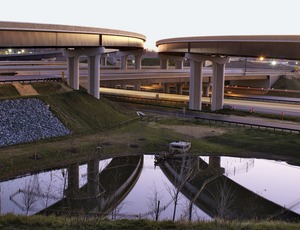
Before construction of the $2.83-billion Intercounty Connector began in 2007, Maryland State Highway Administration officials recognized a critical need to forge better connections among its various stakeholders and streamline its environmental review and permitting processes.
The 18.8-mile project, which completes this summer, crosses numerous sensitive ecosystems in the northern suburbs of Washington, D.C. The team's strategy included construction of numerous culverts for the passage of fish, small mammals and amphibians; installation of permanent fencing to protect deer; and use of specially trained dogs to locate and retrieve eastern box turtle so they could be relocated.
Although the team budgeted $370 million for its environmental program, Rob Shreeve, environmental manager at Maryland SHA, says streamlining its processes was a critical strategy.
The highway administration established an interagency work group for the Intercounty Connector (ICC) that included representatives of key state and federal environmental agencies. Shreeve says that, in the past, the state fostered interagency reviews; however, sometimes agencies would not "get all their information out on the table" until late in the process. "Basically, it was like throwing down a trump card, and everything would come to a screeching halt to address this issue we weren't aware of," he says.
The ICC interagency work group met monthly and as needed, and Shreeve says it prevented the project from getting bogged down in paperwork. "It's much harder to take a uncompromising stance when you're sitting face to face," he says. "In the past, we would just get a letter from an agency that says, 'You can't touch this resource.' If you get that from six or seven agencies, your project is toast."
The team also established its so-called "principal plus one" method, which required the head of an agency to make decisions—with the help of one technical person—when the process became bogged down. For example, Shreeve says that if there was an argument between two Dept. of the Interior agencies regarding sensitive resources, the Secretary of the Interior would decide which resource overruled the other. Shreeve says this process served as a deterrent for problems, encouraging team members to not let arguments escalate.
A September 2002 presidential executive order identifying high-priority projects enabled the project's streamlining efforts.
Officials say Maryland agencies are using a similar interagency group to help expedite the proposed 16-mile light-rail Purple Line project.


Post a comment to this article
Report Abusive Comment